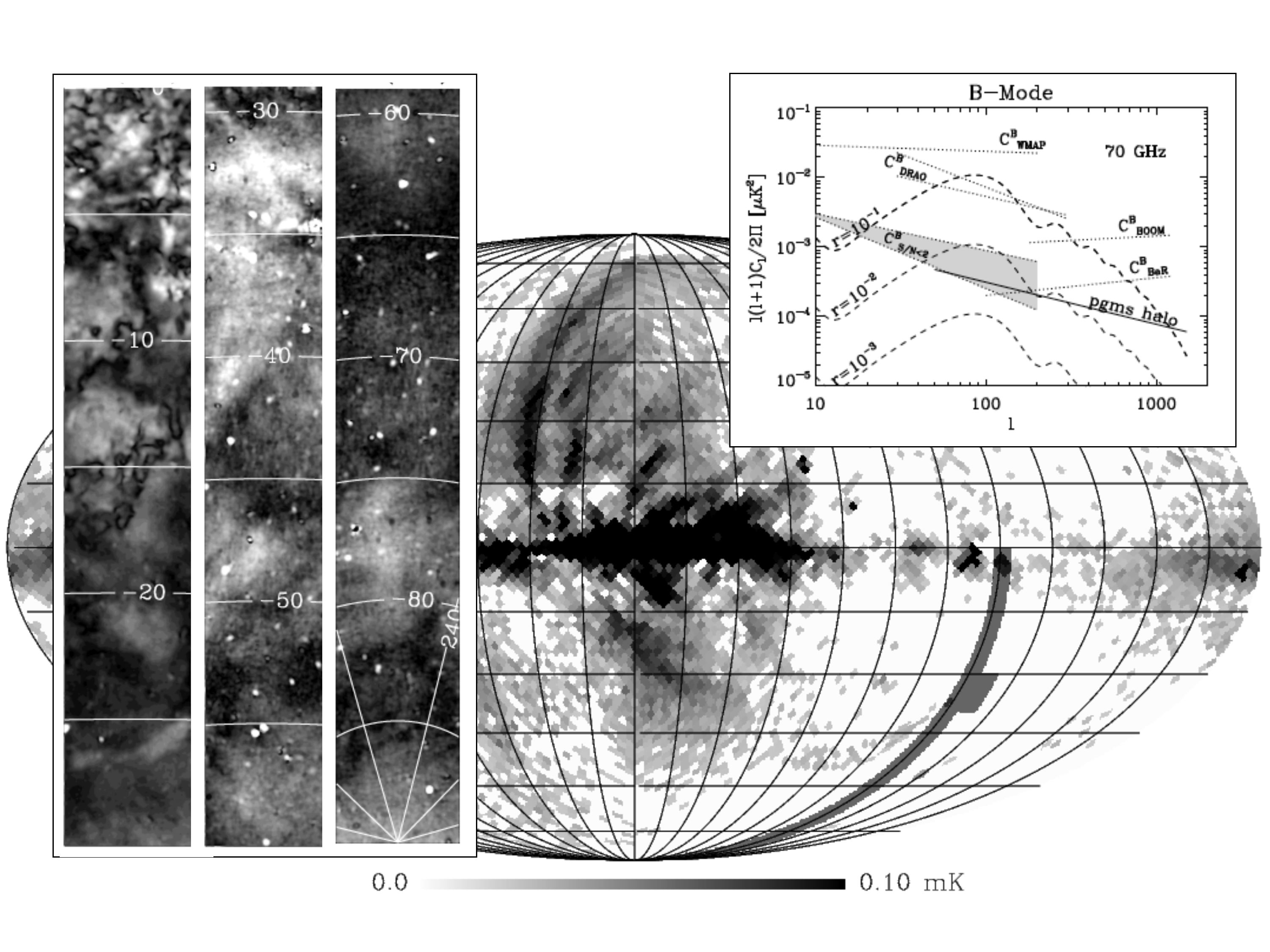Daily Image
23-04-2010PGMS: constraining the polarized Galactic foreground
| Submitter: | Marijke Haverkorn |
| Description: | If you live in Iceland, vulcanic ashes at times make it hard to see the road ahead. Similarly, if you live on Earth, polarized radio radiation from the Milky Way obscures what's beyond. The Cosmic Microwave Background (CMB) radiation is imprinted with information about the Epoch of Reionization a few hundred thousand years after the Big Bang. However, some of its polarization structure called the B-mode is thought to carry information about much earlier times: only a fraction of a second after the Big Bang. A detection of the B-mode would give an estimate of the gravitational wave background in the very early Universe, and test inflation models. However, models predict that the B-mode polarization is extremely weak. It is many orders of magnitude weaker than a number of other components, of which synchrotron and dust radiation from the Milky Way are the strongest. The Parkes Galactic Meridian Survey (PGMS) tries to determine limits on the Galactic synchotron contamination at CMB frequencies. It surveys a strip (gray in background image) at 2.2 - 2.4 GHz from Galactic plane to south pole where WMAP polarization (background image) is noise limited. Polarized intensity shows structure on all latitudes, although it is strongest in and near the Galactic plane, as can be seen in the foreground image on the left. The coordinates given are Galactic coordinates, the gray scale in the left-most strip is from 0 to 35 mK, the gray scale in the other two (higher latitude) strips is 0 to 10 mK. This project resulted in new limits to the Galactic synchrotron foreground, shown in the righ-hand figure. The dashed lines give theoretical estimates of B-mode spectra and the dotted lines are earlier foreground limits. The solid line of the PGMS results shows stronger limits, which may have consequences for the preferred frequency to look for the B-mode or instrument specs. This research was recently published in Carretti, Haverkorn, McConnell, Bernardi, McClure-Griffiths, Cortiglioni and Poppi, MNRAS, 2010, in press. |
| Copyright: | Carretti et al, MNRAS, 2010 |
| Tweet |  |
